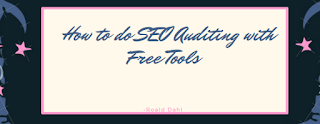3Digital Marketing Challenges and How to Solve Them
- Get link
- X
- Other Apps
Digital Marketing Nightmares: 3 Challenges and How to Solve Them
The following is a guest contributed post by Matt Langie, CMO at
Mapp Digital. Digital marketing continues to transform how brands
interact with customers, and it’s safe to say every industry changed for
the better. Sure, this is a pretty grandiose statement, but think
about...
The following is a guest contributed post by Matt Langie, CMO at Mapp Digital.
Digital marketing continues to
transform how brands interact with customers, and it’s safe to say every
industry changed for the better. Sure, this is a pretty grandiose
statement, but think about it. Marketers have more data-driven insights
than before, and in turn, they use those insights to better engage with
key demographics.
While there are many new avenues for
consumer interaction and data-driven strategies to increase conversions,
there’s still crippling challenges the industry needs solve. Here are
three major challenges sweeping the industry, and how solve for them.
Too Complex, Expensive and Time Consuming
According to Ascend2
“Marketing Technology Trends Survey” (Jan 2017), for nearly half of B2C
marketing influencers, inadequate technology integration is a
significant barrier to marketing technology success. Additionally, the
survey stated 50% of companies indicate technology integration is a
significant barrier to success, where only 37% have extensively
integrated their marketing systems, and 4% have not integrated their
marketing technologies at all.
Solving for digital marketing
complexities is not as difficult as many people think, and it doesn’t
need to be expensive. Also, companies don’t need an army of digital
experts to achieve success/results/KPIs. With the easy-to-integrate and
open digital marketing platforms available today, the challenges of
unifying new technology with legacy or in-house built systems are
greatly simplified, if not by the in-house IT team then by the digital
marketing partner or agency.
Siloed Technologies
The entire customer experience is
shaped by technology, data, analytics and design. Information technology
is not only pervasive, it is a primary driver of market
differentiation, business growth and profitability. As consumers head
full speed into a world where brand and technological experiences are
indistinguishable, revamped marketing and IT teams need to be jointly
responsible for owning the design of the customer experience.
A recent report
by Accenture highlights this. It states chief marketing officers (CMOs)
and chief information officers (CIOs) must work closer together than
ever before. New data management platforms are now available that bring
together siloed data to provide a 360° view of customers across multiple
channels and systems. Through these new simplified tools, CIOs and CMOs
have a new-found ability to orchestrate their organization’s messages
and ultimately enhance customer experiences.
Trouble Identifying customers
Another major challenge is customer
identification across channels. It’s necessary to identify a successful
connected customer path, but it can be hard to achieve. Oftentimes, the
information collected in customer databases is “dirty,” with multiple
profiles for each customer and lots of missing or incorrect information.
When customers make online purchases, they provide a lot of personal
data, both actively (via payment forms) and passively (via cookies),
which ensure companies can identify them quickly. But in
brick-and-mortar stores, often the only data collected is an anonymous,
encrypted credit card number — not nearly enough information to build an
accurate customer profile.
Also, some brands have access to
data, but do not wish to risk upsetting customers through potential
privacy questions. This will become even more prominent with the new
GDPR data protection regulations coming into play.
Today’s digitally-savvy customers
expect a consistent experience across every channel. They want to be
treated as individuals, feel like brands know them and that
organizations understand their needs. To succeed, companies need to
offer the ultimate digital experience from initial browsing right
through to arrival at the chosen destination. To stand out from the
crowd, it’s time to embrace technology and techniques to be relevant,
offer personalized messages and impact the customer’s brand affinity.
Source
Happy reading
To your success
Wasiu Folorunsho Emiola
Founder:W3FEnterprises,Lagos,Nigeria
- Get link
- X
- Other Apps



Comments
Post a Comment